Barrow Creek is a very small town, current
population of 11, in the southern Northern Territory of Australia. It is located on the Stuart Highway, about 280 km north of
Alice Springs, about half way from there to
Tennant Creek. The main feature of the town is the roadhouse/hotel. A number of mining companies are currently exploring in the area, although none of the current residents are involved in the mining industry.
The
Barrow Creek area is the traditional home of the Kaytetye Aboriginal people. Humans have lived in Australia, and perhaps this area, for at least 40,000 years.
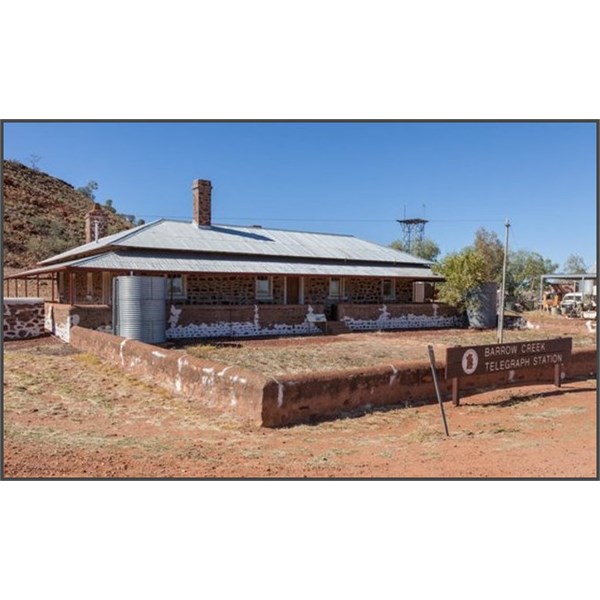
Barrow Creek Telegraph Station
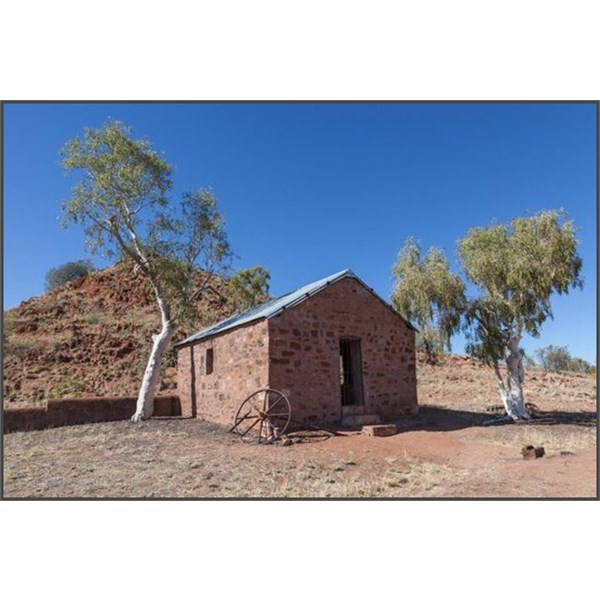
Barrow Creek Telegraph Station Outbuilding
With the arrival of Europeans in the latter part of the 19th century, settlers competed with the Kaytetye for land and resources. Cultural misunderstandings on land and property rights resulted in mutual killings.
John McDouall Stuart passed through the area in 1860. He named a
creek near the current town after John Henry Barrow, a preacher, journalist and politician who was born in England in 1817 and migrated to South Australia in 1853. At the time of first European habitation of the site, he was Treasurer of South Australia.

Barrow Creek Telegraph Station 1901
was chosen as a site for an Overland Telegraph morse repeater station by John
Ross in September 1871. The station was officially opened on 16 August 1872 by Charles Todd. It was one of 15 such repeater stations on a network traversing Australia and linking to Europe, providing essential communication
services. The Telegraph Station has been preserved and is now a monument to the troubles which beset the early days of the Territory.
In 1873, 5,000 sheep were overlanded from
Adelaide by Alfred Giles for distribution to Telegraph Stations along the line. During 1877 and 1878 Alfred Giles and Arthur Giles overlanded stock for Dr W. J. Browne to the
Katherine River. On the 1878 journey Frank Withall, a
young Englishman, was included on the suggestion of Browne to gather some colonial experience. Alfred Giles later started Springvale, Delamere and the
Newcastle Waters runs.
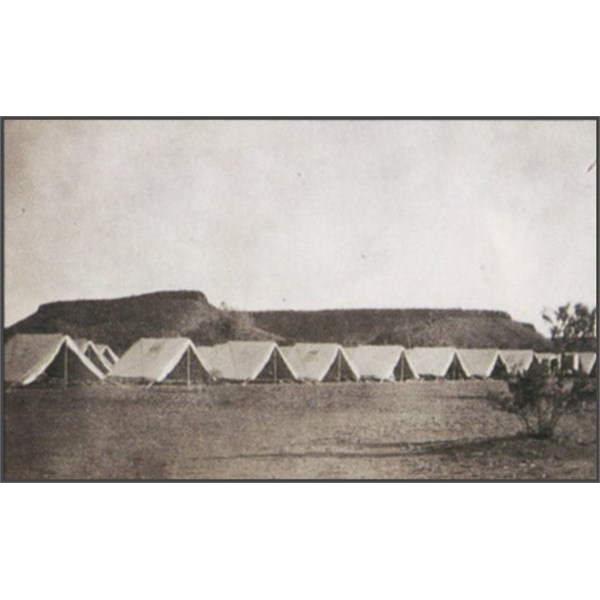
Barrow Creek Army camp
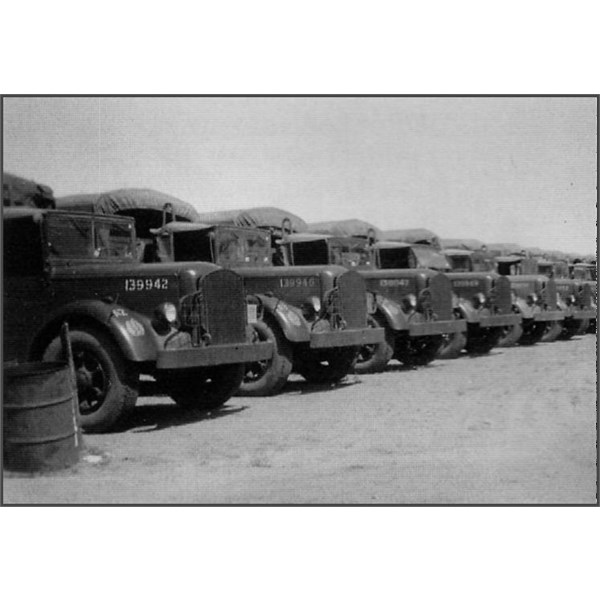
Mack Diesels at Barrow Creek during WW2
During the Second World War
Barrow Creek was used by the Australian Army as a staging
camp for convoys of troops and supplies, which was known as No. 5 Australian Personnel Staging
Camp. It was the first overnight stop on the northern trip from
Alice Springs to Birdum.

Army Convoy at Barrow Creek
has always had a problem with both quantity and quality of groundwater supplies. This problem was already recognized in the 1870s, and only 20 years after the Telegraph Station was built there is evidence of plans to shift it about 40 kilometres further north to the crossing at Taylor
Creek because of better groundwater supplies. There is still a
bore at that locality called New Barrow
Bore. Today, the only good
water at
Barrow Creek is rainwater and that is limited due to the arid climate.
In February 1874 Mounted Constable Samuel Gason arrived at
Barrow Creek and a
police station was also opened. Eight days later a group of Kaytetye men attacked the station resulting in the death of two white men, Stapleton and Frank, and the wounding of Ernest Flint.
Some believe the attack was retaliation for the white men's treatment of Kaytetye women. Others say it occurred because the white men had fenced off a major
waterhole and refused the Kaytetye access to
water and rations during a time of drought. It is probable that both these issues were grievances for the Kaytetye.
On 22 February Gason cabled to
Adelaide:
This Station has been attacked by natives at 8. Stapleton has been mortally wounded, one of the men, named John Franks, just died from wounds. Civilised Native Boy has had three spear wounds. Mr Flint, assistant operator one spear wound in leg, not serious. Full particulars in morning.
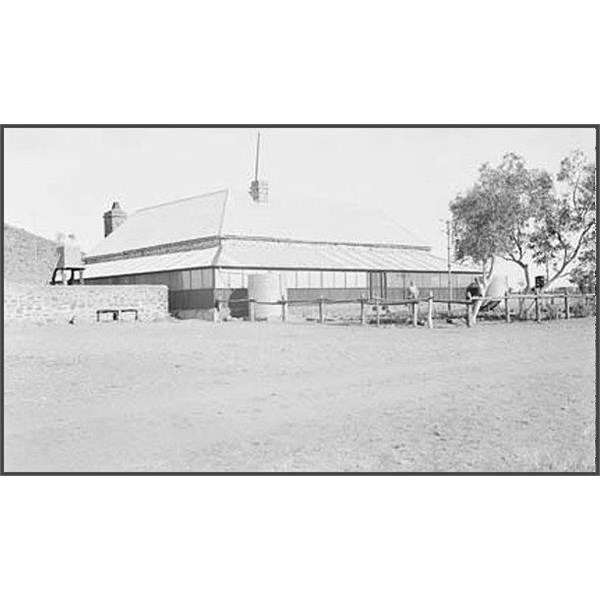
Barrow Creek Police Station 1924
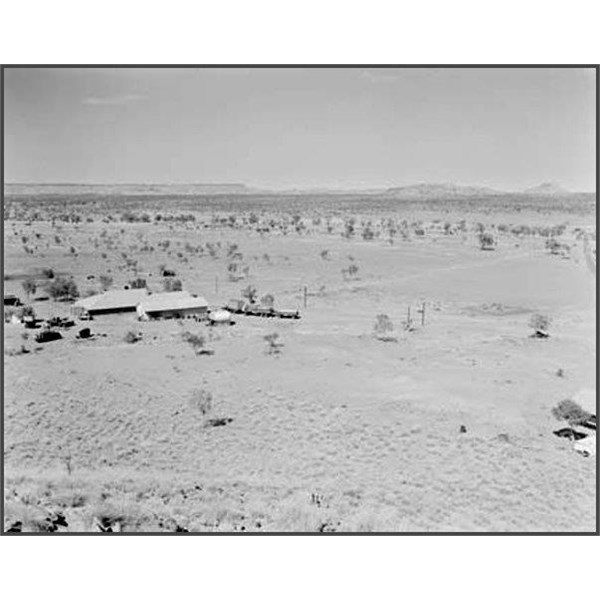
Barrow Creek 1958
Samuel Gason was instructed to mount a police hunt for the killers resulting in several engagements in which up to ninety men, women and children died some fifty
miles south of where the white men had been killed. No prisoners were taken. The area where they were slaughtered was later called Skull
Creek for the number of bleaching native skulls left there. According to Alex
Ross, who had been a member of Ernest Giles 1875–76 expedition in Central Australia, as interviewed by the anthropologist Ted Strehlow in 1932:
As for Skull Crk.,-
well of course nobody ever knew if any one who was shot there had ever had any hand in the attack on BC. They were just blacks sitting in their
camp, and the party was looking around for blacks to shoot. Quite possibly some guilty ones were among them.
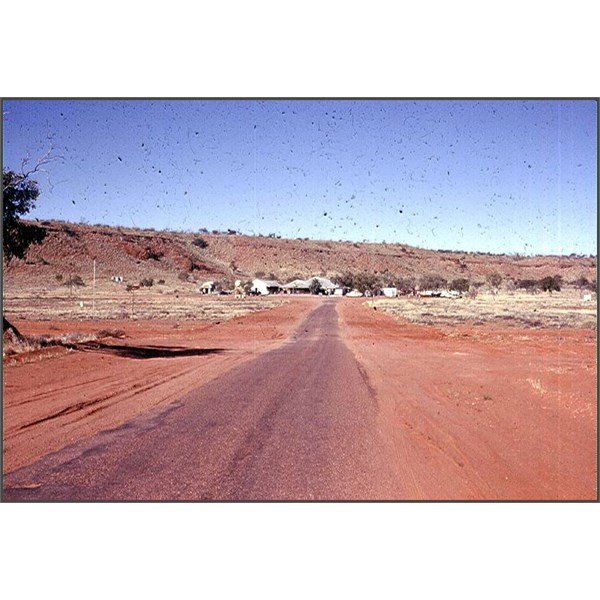
Approaching Barrow Creek 1968
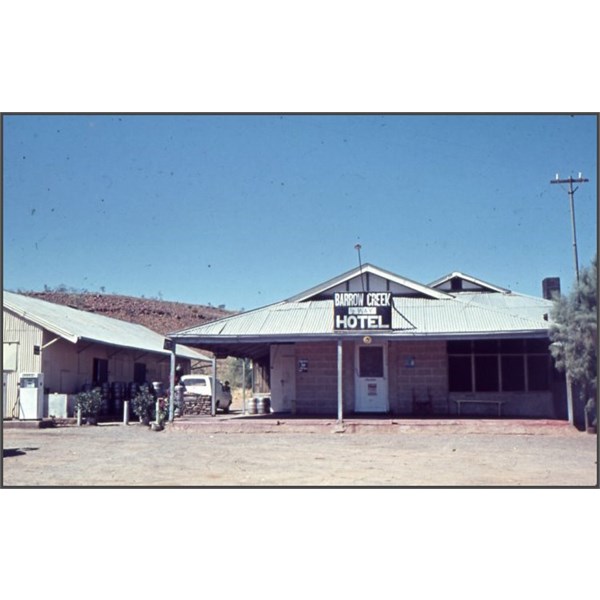
Barrow Creek Hotel, 1969
The old pub was built in 1926 by Joe Kilgariff, uncle of Northern Territorian senator Bernie Kilgariff, and it still has the original old bar, underground cellar and tin ceilings. There is accommodation outside and rooms inside and a caravan
park. On the wall in the kitchen of the building is a cartoon of two Australian comic icons, Bluey and Curley, drawn by the artist John Gurney when he passed through during the Second World War. The hotel is a popular stop for travellers along the highway and contains a tremendous collection of memorabilia and items of interest which have been gathered over the years. The current publican of 25 years, Lesley Pilton, initiated what he terms the "
Barrow Creek Bank" - travellers post on the wall a signed banknote of their native country, "to be used in a later journey in case they need a beer